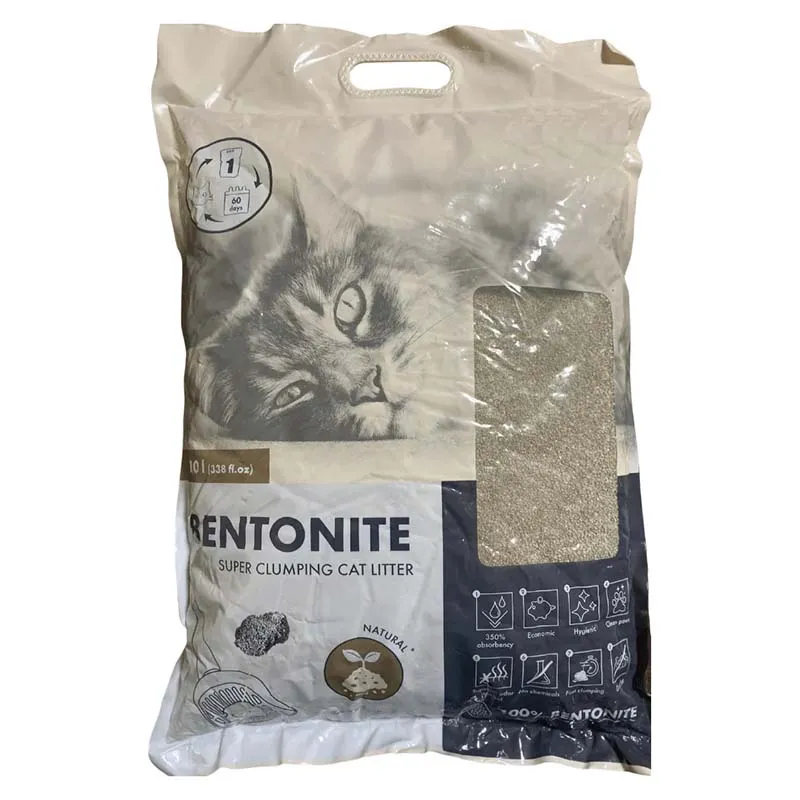Bentonite cat litter history
For today's cat owners, cat litter is as much a necessity as cat food. But before 1950, most cat boxes were filled with sand, dirt, or ashes instead of the more convenient superabsorbent litters to which cat lovers are now accustomed.
Kitty litter got its start when a neighbor frustrated with her cat tracking ashes throughout the house asked a budding entrepreneur named Edward Lowe for some sand. Lowe, whose family owned an industrial absorbents company, convinced her to try clay instead. So Lowe sent the neighbor home with an absorbent clay called Fuller's earth. She loved it and soon would use nothing else in her cat box.
Her enthusiasm spurred Lowe to try to sell the stuff, which he dubbed "Kitty Litter," as a cat box filler. But the local pet store owner was doubtful that anyone would pay money for the product when the alternatives were available for next to nothing. So Lowe began giving it away for free. Soon, he had satisfied customers willing to pay good money for Kitty Litter. By 1990, Edward Lowe Industries was the largest producer of cat box filler in the U.S.
The secret to cat litter's Kitty Litter is granulated Fuller's earth. Fuller's earth is actually a catchall term for a chemically diverse set of absorbent clay minerals capable of absorbing their weight in water. Fuller's earth litters naturally provide some odor control by sequestering urine. But if the soiled litter isn't replaced and urine begins to collect at the bottom of the box, bacteria found in feces will convert the uric acid in cat urine into unpleasant-smelling ammonia. Fuller's earth litters can alleviate some of the ammonia odor by trapping the positively charged ammonium ions that are formed when water in urine protonates the ammonia. To improve odor control, cat litter manufacturers use a number of additives, including baking soda to absorb smells, fragrances to mask unpleasant scents, and antibacterial agents to kill odor-causing bacteria.
25L Lavender Bentonite Cat Sand
Traditional clay litters like original Kitty Litter still make up about 40% of the cat litter market. But like ashes, dirt, and sand, traditional clay litters must be discarded and replaced fairly often, making cat box cleaning a frequent chore. Unhappy with the inconvenience of traditional litters, biochemist and cat lover Thomas Nelson began investigating alternative clay formulations in the early 1980s. He observed that a certain type of clay called bentonite clumped up in the presence of moisture, allowing waste to be isolated and scooped out, leaving behind clean litter. Today, roughly 60% of the cat litter sold in the U.S. is of the clumping variety, and most of it is made from bentonite clay.
Bentonite is largely composed of montmorillonite, a clay mineral made up of stacks of SiO4 sandwiched between two sheets of octahedrally coordinated aluminum, magnesium, or iron. Substitution of lower valence ions for some of the higher valence ones in the octahedral sheets creates a negative charge imbalance that traps cations, most often sodium or calcium, between the stacked sandwiches.
The absorption power of various types of bentonite is determined by which cation is present and in what amount. Because sodium ions have a larger hydration sphere than calcium ions do, sodium bentonite can absorb more moisture than its calcium counterpart, explains clay scientist Shobha, a bentonite mining company in Billings, Mont. Sodium-rich bentonite is therefore the material of choice for clumping cat litter, she says.
Like traditional clay litters, bentonite litters provide some inherent odor control, thanks to their ability to sequester urine and to trap any NH4+ produced from urine degradation. Recently, "crystal" cat litters that promise improved odor control have entered the market. The silica gel used to make these crystals is chemically similar to that used in desiccants. The silica gel crystals in such litters are dotted with tiny pores, allowing the crystals to absorb cat urine, then slowly allow the water to evaporate off.








